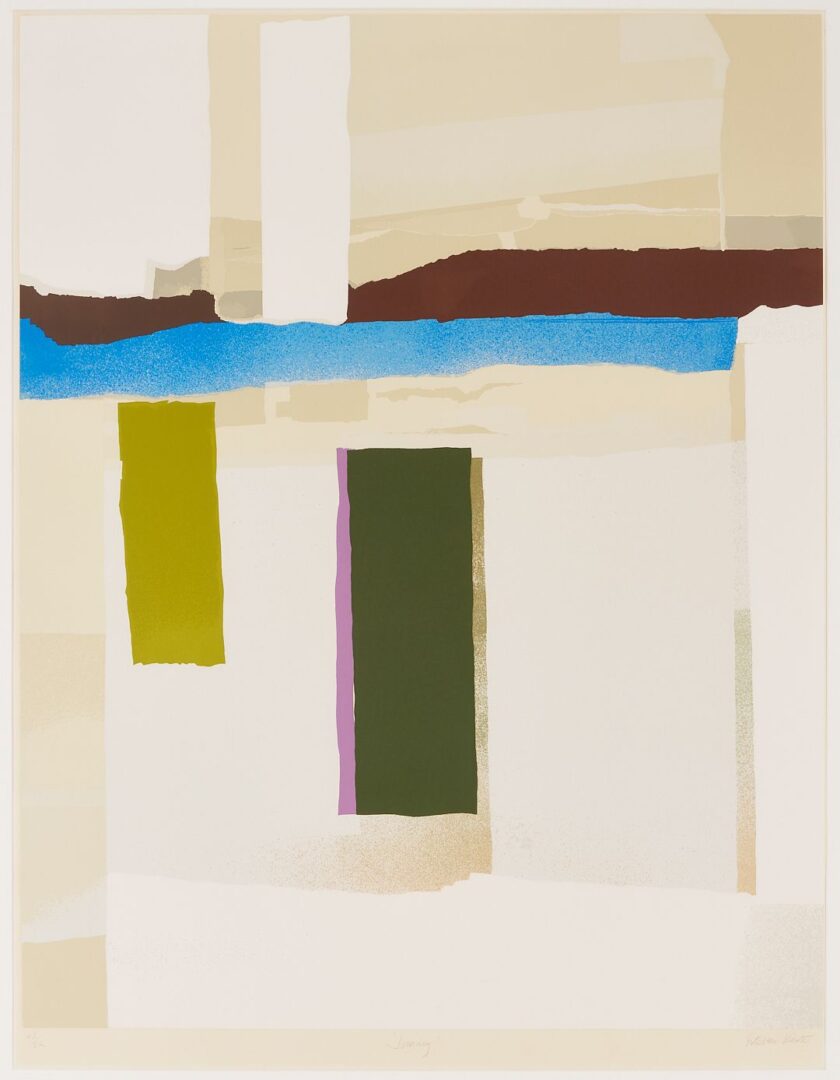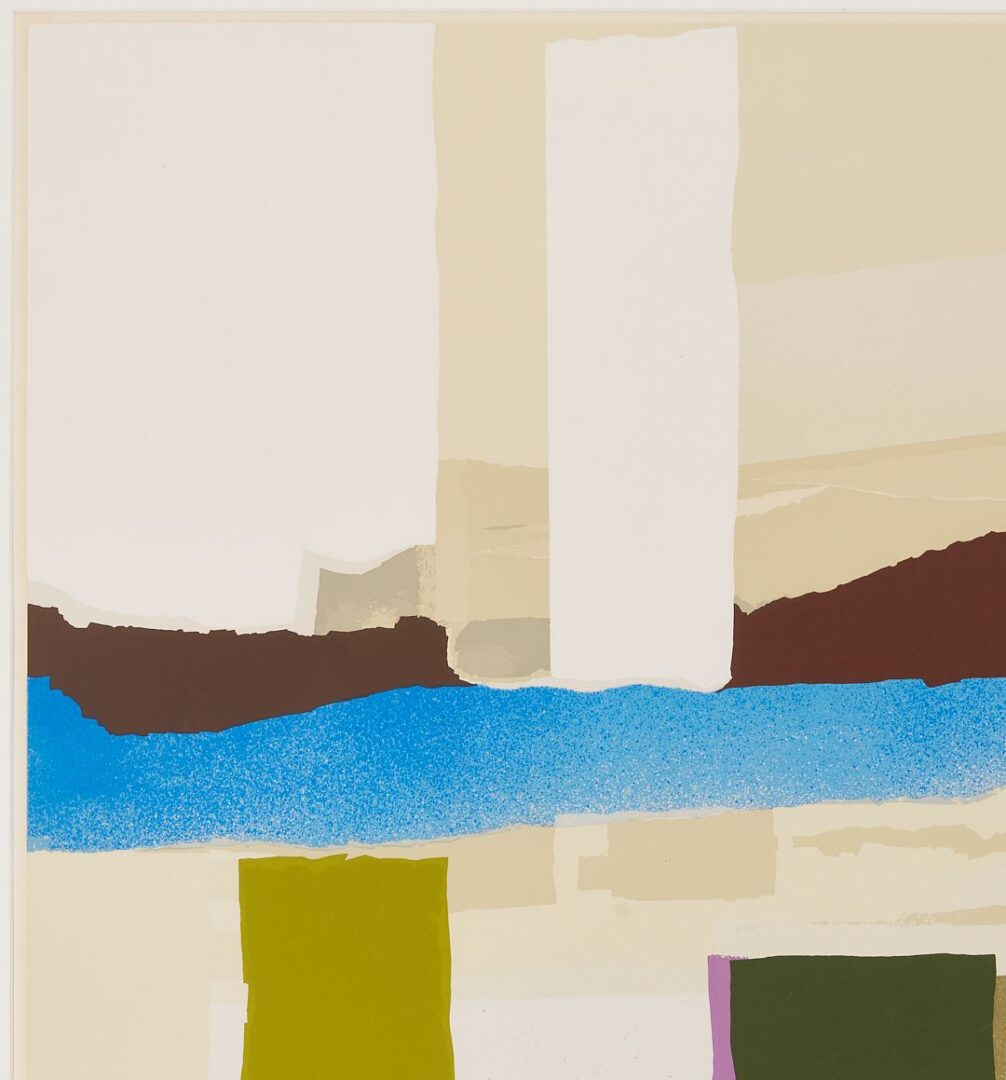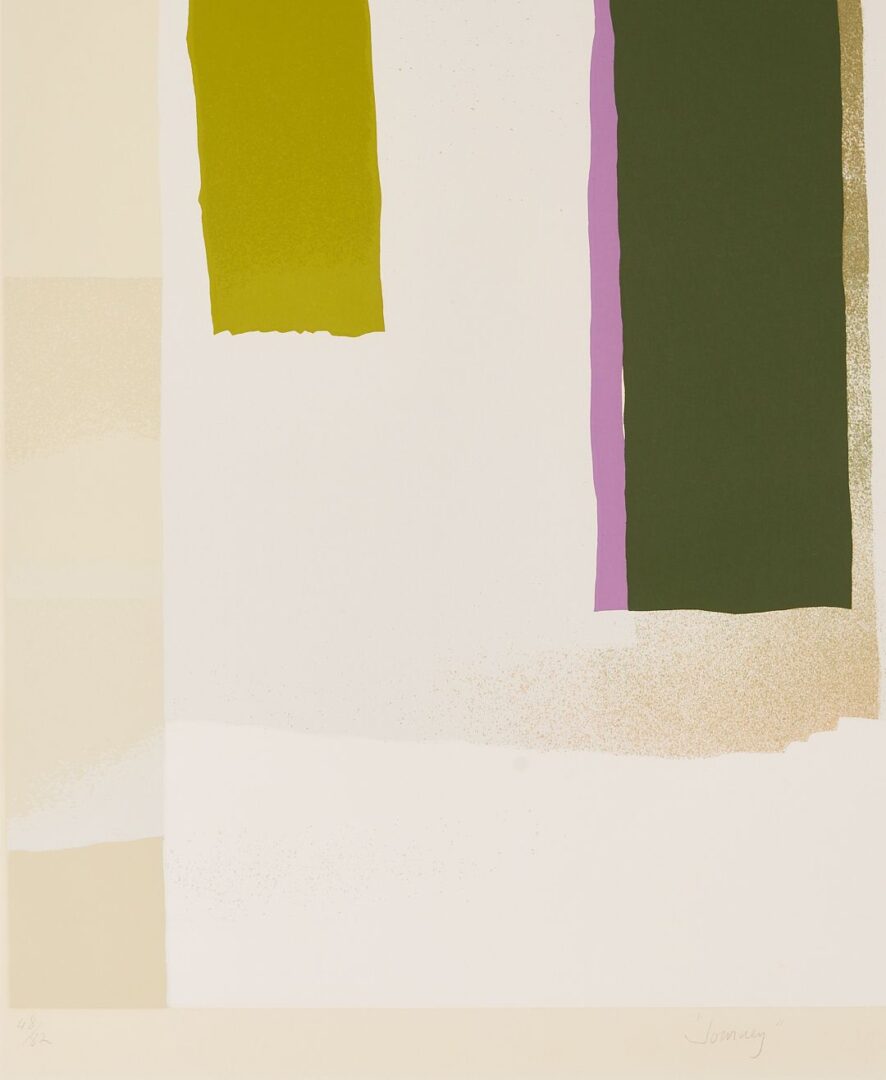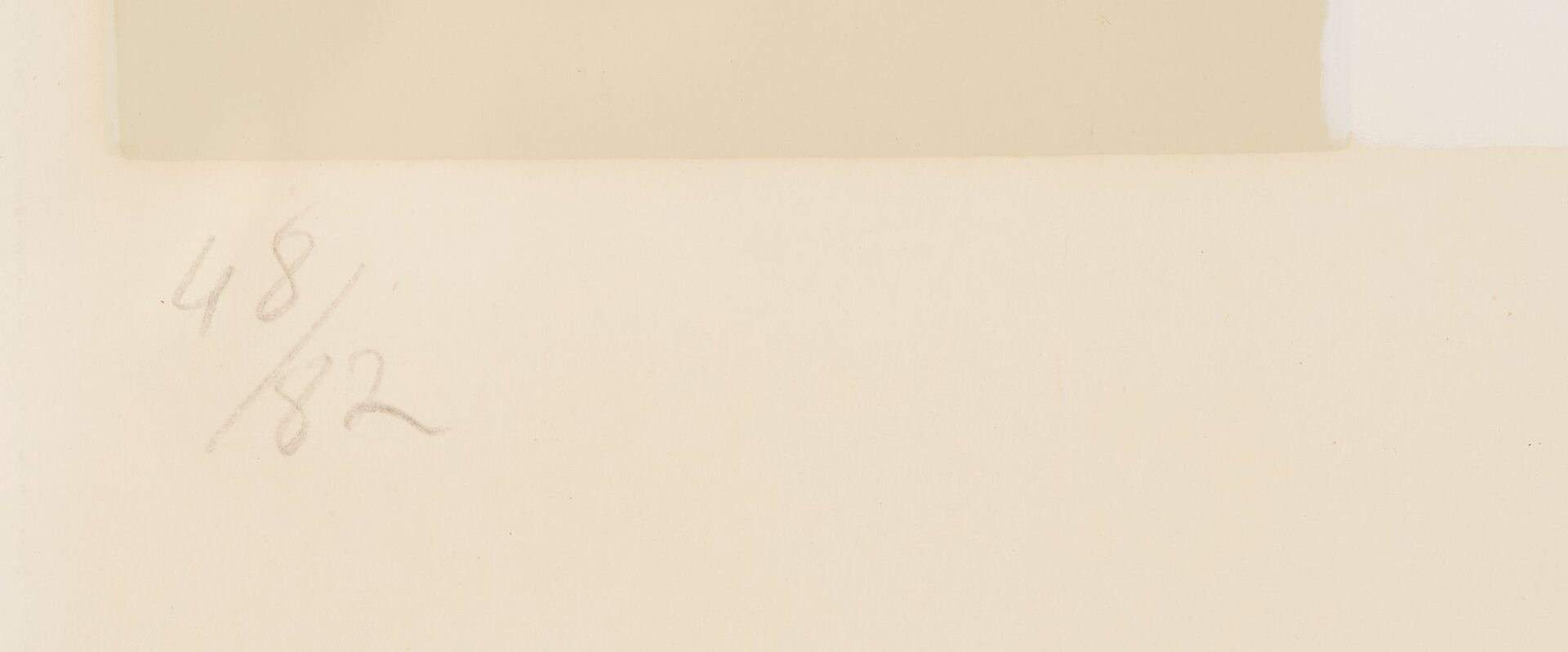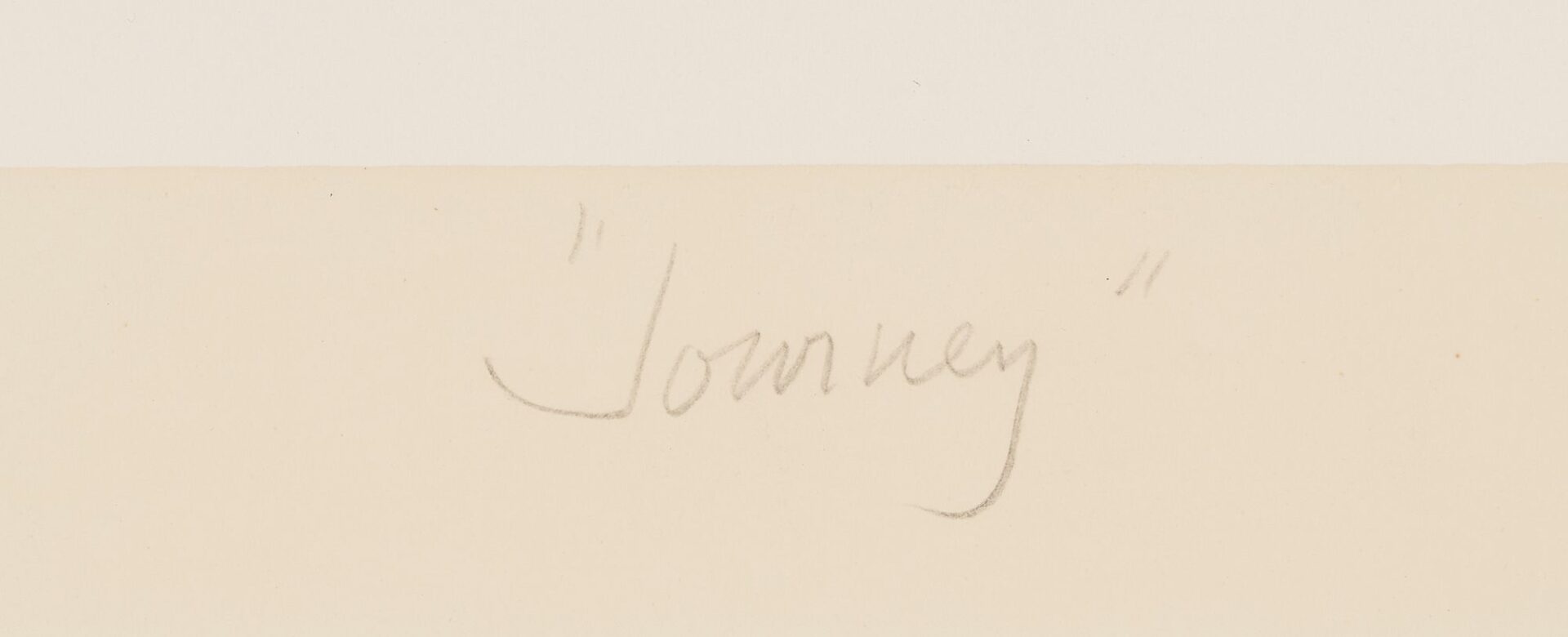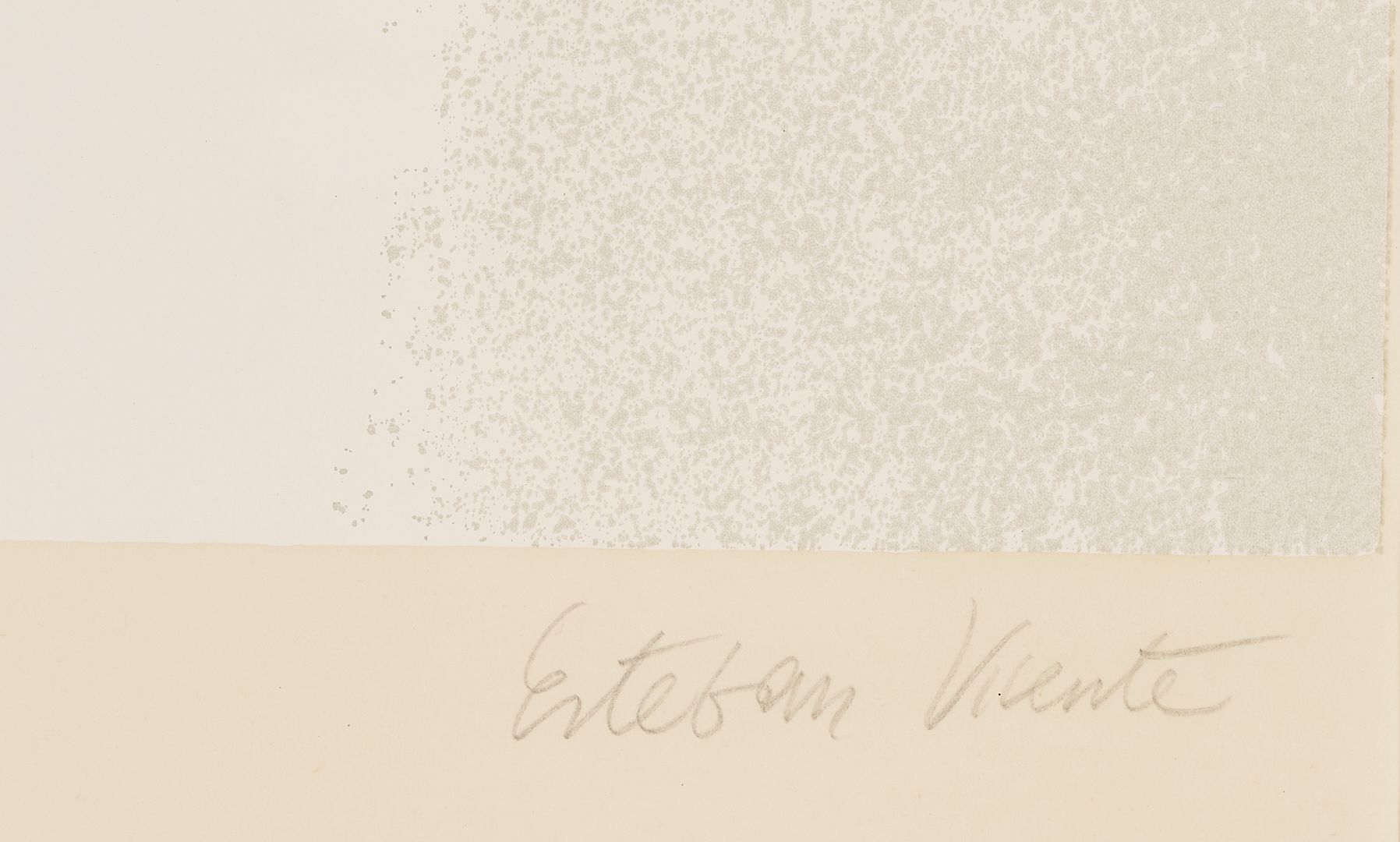SOLD! for $671.00.
(Note: Prices realized include a buyer's premium.)
If you have items like this you wish to consign, click here for more information:
Selling with Case- Low Estimate: $600.00
- High Estimate: $700.00
- Hammer Price: $550.00
- Share this:
Esteban Vicente (American/Spanish, 1903-2001) abstract expressionist screenprint in colors, “Journey.” After the artist’s 1978 collage and paper composition “Blue Band for Harriet” in the collection of the Asheville Art Museum. Signed, titled, and numbered 48/82 in pencil, lower margin. Housed under plexiglass in an ebonized wood frame with white mat. Sight: 40 3/4 in H x 31 1/4 in W. Frame: 48 1/2 in H x 39 in W. Biographical Note: “Within the first generation of Abstract Expressionists, Esteban Vicente was a member of the most influential circles of artists. During the course of his long and lauded career, he closely studied shape, light, and the possibilities of pigment. The artist completed his studies at the Real Academia de Bellas Artes in Madrid, Spain in 1924. In 1936, Vicente escaped the Spanish Civil War, moved to New York, NY, and then to Philadelphia, PA. Despite this departure from his country of birth, a museum dedicated to his life and work can be found in Segovia, Spain. By the late 1940s, Vicente was committed to exploring abstraction, giving up his earlier representational style of painting…Vicente taught at the legendary Black Mountain College in Black Mountain, NC, in the summer of 1953 alongside Joseph Fiore and Peter Voulkos, and by all accounts, had a lasting impact on his students’ careers, including artists such as Dorothea Rockburne. He also taught at other prestigious institutions, such as the New York Studio School of Drawing, Painting, and Sculpture and the University of California Berkeley. Later in that decade, Vicente fully embraced the tenets of Abstract Expressionism. Vicente was close to many of his famous contemporaries, including Willem de Kooning (with whom he shared a studio), Elaine de Kooning, Jackson Pollock, Mark Rothko, Franz Kline, Barnett Newman, and Ad Reinhardt. From the 1960s to the end of his career, Vicente explored a mode of expression that integrated abstraction, movement, and color.” (Source: Asheville Art Museum)
PROVENANCE: Private corporate collection.
CONDITION: Overall very good condition, with minor buckling to lower left quadrant and faint 1-inch L crease to upper right, above diagonally-placed form.
